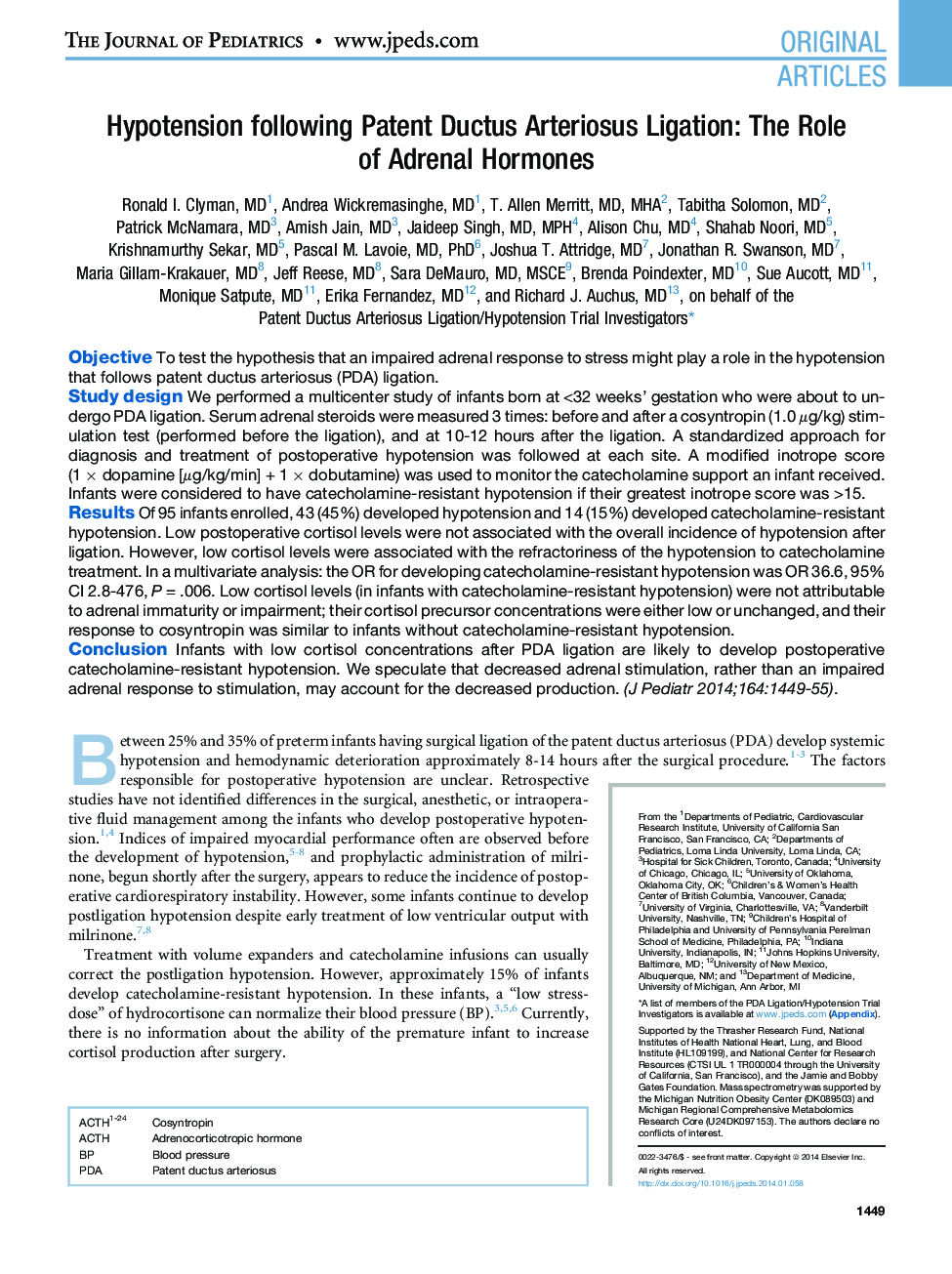| Article ID | Journal | Published Year | Pages | File Type |
|---|---|---|---|---|
| 6220701 | The Journal of Pediatrics | 2014 | 8 Pages |
ObjectiveTo test the hypothesis that an impaired adrenal response to stress might play a role in the hypotension that follows patent ductus arteriosus (PDA) ligation.Study designWe performed a multicenter study of infants born at <32 weeks' gestation who were about to undergo PDA ligation. Serum adrenal steroids were measured 3 times: before and after a cosyntropin (1.0 μg/kg) stimulation test (performed before the ligation), and at 10-12 hours after the ligation. A standardized approach for diagnosis and treatment of postoperative hypotension was followed at each site. A modified inotrope score (1 Ã dopamine [μg/kg/min] + 1 Ã dobutamine) was used to monitor the catecholamine support an infant received. Infants were considered to have catecholamine-resistant hypotension if their greatest inotrope score was >15.ResultsOf 95 infants enrolled, 43 (45%) developed hypotension and 14 (15%) developed catecholamine-resistant hypotension. Low postoperative cortisol levels were not associated with the overall incidence of hypotension after ligation. However, low cortisol levels were associated with the refractoriness of the hypotension to catecholamine treatment. In a multivariate analysis: the OR for developing catecholamine-resistant hypotension was OR 36.6, 95% CI 2.8-476, P = .006. Low cortisol levels (in infants with catecholamine-resistant hypotension) were not attributable to adrenal immaturity or impairment; their cortisol precursor concentrations were either low or unchanged, and their response to cosyntropin was similar to infants without catecholamine-resistant hypotension.ConclusionInfants with low cortisol concentrations after PDA ligation are likely to develop postoperative catecholamine-resistant hypotension. We speculate that decreased adrenal stimulation, rather than an impaired adrenal response to stimulation, may account for the decreased production.
